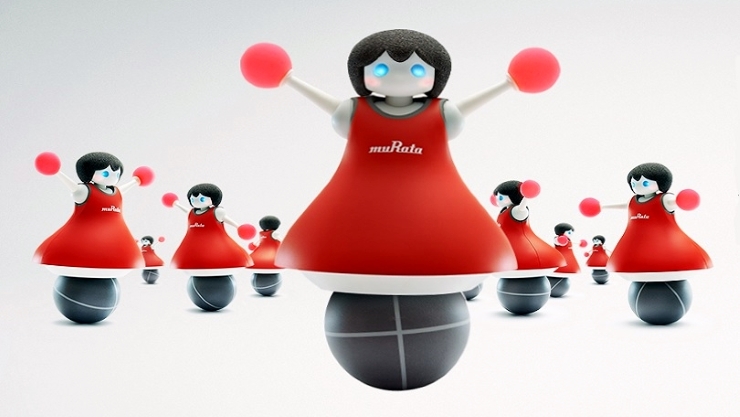
Robohub.org
Robots dance in synchronization while balancing on balls
Murata Manufacturing recently unveiled a team of 10 robots, called the Murata Cheerleaders, which dance in formation while balancing on top of balls. The Murata Cheerleaders are Murata’s fourth generation of robots, following the bicycle-riding MURATA BOY in 1991, the second MURATA BOY in 2005, and the unicycle-riding MURATA GIRL in 2008.
All of these robots incorporate Murata’s proprietary core technology.
In addition to being equipped with attitude control technology adapted from the previous robots, the new robots incorporate group control technology to perform in synchronization while accurately identifying their relative positions.
“The robots have three main technical features. The first is inverted-pendulum control technology to maintain stability. This was first used in MURATA BOY and the MURATA GIRL, and now a more advanced version has been developed for the Murata Cheerleaders.”
The robot body is equipped with three gyro-sensors to detect pitch, roll and yaw for 360-degree control. Gyro-sensors also are used for camera image stabilization, car navigation, and electronic stability control in automobiles.
“The second technical feature is synchronization. The robots are equipped with group control technology to perform group tasks in unity. To achieve beautiful formations without collisions, a host computer calculates the next position of each robot and then sends commands to each one. The result is a magnificently beautiful formations.”
“The third feature is ultrasonic measurement of positions using sensing and communication technology. The head of each robot contains five ultrasonic microphones and four infrared sensors. Two transducer beacons simultaneously emit ultrasonic waves and infrared light. Since sound and light travel at different speeds, distances can be detected according to the times that the reflected signals return to each robot.”
Ultrasonic sensors are also used for backup sonar in vehicles. In the robots, the sensors enable respective positions to be identified in real time within a four-meter square area. The group control technology was developed through joint research with Professor Fumitoshi Matsuno’s laboratory at Kyoto University.
“Group control technology also can be used in transportation systems to coordinate vehicle movement smoothly. Such control could alleviate traffic congestion and prevent collisions at intersections with poor visibility. Using wireless communication technology, one of Murata’s strengths, we aim to support communication both between cars and between cars and communication information posts at intersections.”
The Murata Cheerleaders will perform at the Murata booth during CEATEC 2014, which will take place at the Makuhari Messe convention center in Chiba Prefecture, Japan from October 7 to 11.

tags: c-Arts-Entertainment




